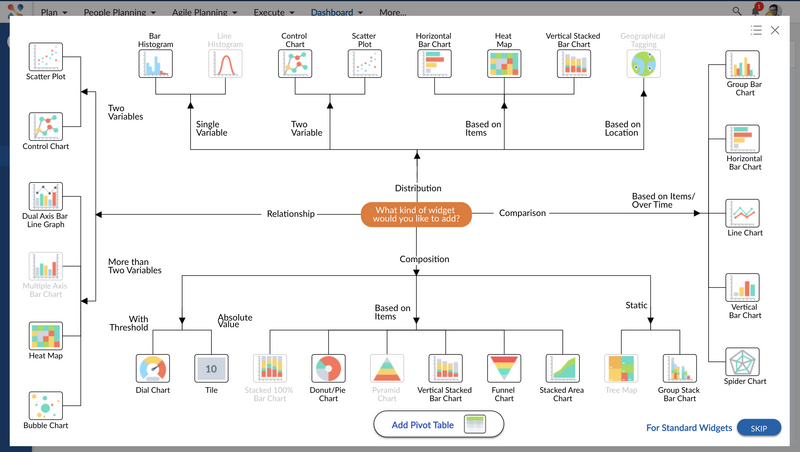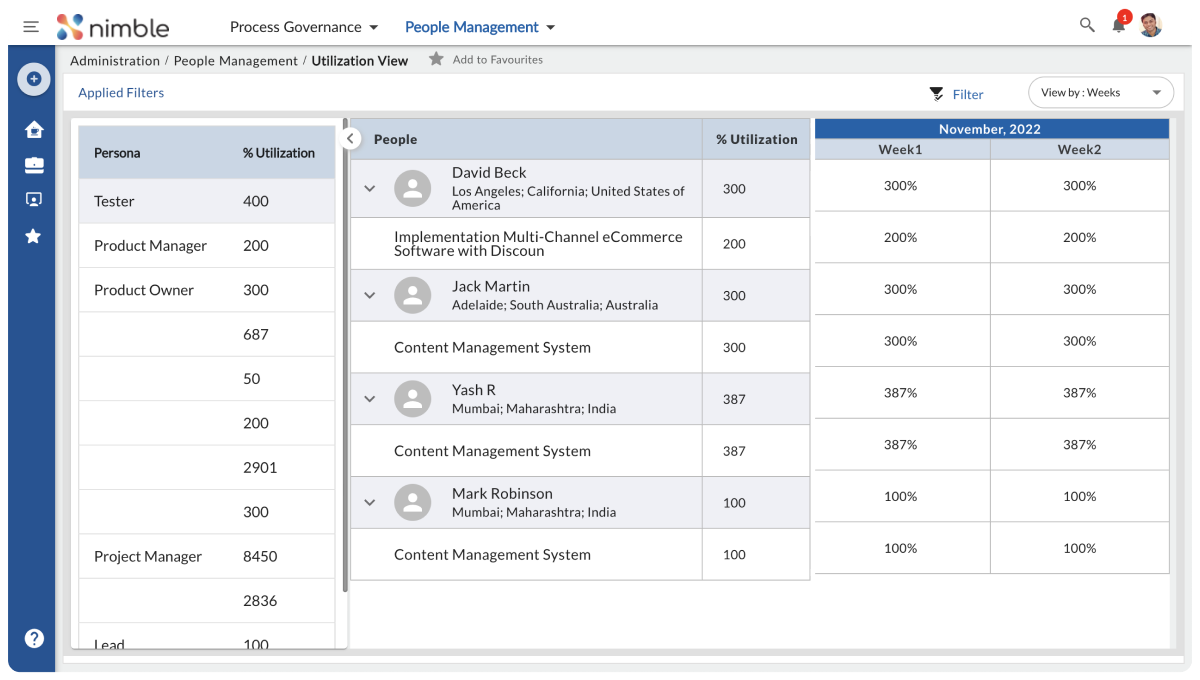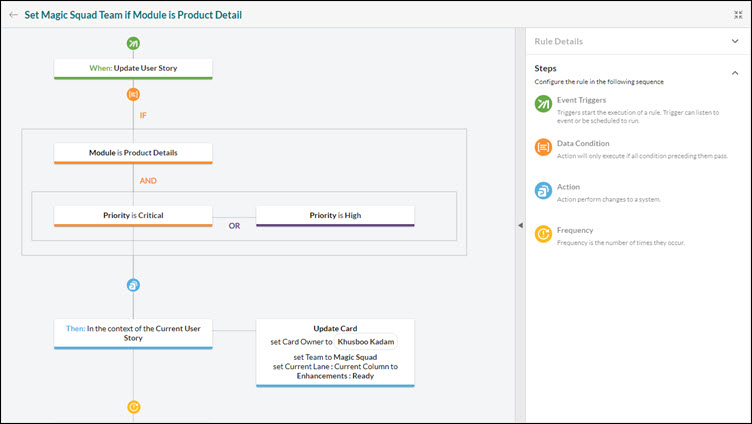In the intricate ecosystem of modern organizations, success is no longer achieved through isolated departmental efforts, but through the strategic symphony of interconnected teams. Cross-departmental collaboration represents a transformative approach that challenges traditional workplace boundaries, creating a dynamic environment where diverse expertise converges to drive organizational excellence.
Imagine an organizational landscape where marketing insights seamlessly inform product development, where customer support experiences directly shape strategic planning, and where finance, operations, and sales move in harmonious alignment. This is not an idealistic vision, but an emerging reality for forward-thinking companies that understand the profound power of breaking down departmental silos.
At its essence, cross-departmental collaboration is more than a management strategy—it’s a fundamental reimagining of how organizations can work. It transcends mere communication, fostering a culture of mutual understanding, shared accountability, and collective innovation. By encouraging teams to look beyond their immediate responsibilities and embrace a holistic view of organizational goals, companies can unlock unprecedented levels of creativity, efficiency, and strategic adaptability.
The traditional corporate model, with its rigid departmental structures, is increasingly becoming a relic of the past. In today’s interconnected business environment, the ability to collaborate seamlessly across functional boundaries is not just an advantage—it’s a critical determinant of organizational success and resilience.
Benefits of Cross-Departmental Collaboration
1. Enhanced Performance: Organizations that foster effective cross-functional collaboration are 2.4 times more likely to achieve high performance compared to those that do not.
2. Customer Satisfaction: Cross-functional teams can boost customer satisfaction by as much as 30% when departments like marketing, sales, and customer support collaborate seamlessly.
3. Improved Communication and Efficiency: Collaboration breaks down departmental silos, enhancing communication and reducing misunderstandings.
4. Increased Innovation: Bringing multiple perspectives together allows for diverse, non-traditional solutions and processes to be created.
5. Enhanced Employee Engagement and Satisfaction: Employees who feel like members of a team are over 200% more likely to be and stay engaged in their workplace
These above benefits supported by the data highlight the significant impact of cross-departmental collaboration on overall organizational success, emphasizing its importance in modern business practices.
How can Work Management Software tools help in the Boosting Cross Team collaboration?
1. Improved Communication and Real-Time Connectivity
Seamless communication across teams breaks down silos and ensures everyone stays in the loop, regardless of location. This reduces delays in information sharing, speeds up decision-making, and enhances responsiveness between teams, leading to quicker resolutions and smoother workflow transitions.
2. Enhanced Transparency and Accountability
Clear visibility into project timelines, tasks, and progress ensures that all teams are aligned and aware of dependencies. Teams can track each other’s progress, ensuring transparency, minimizing bottlenecks, and holding members accountable for their part in the project. This leads to better ownership of tasks and higher efficiency.
3. Centralized Knowledge and Resource Sharing
Facilitating easy sharing and updating of key documents ensures that all team members have access to the latest information. This prevents version control issues, improves knowledge retention, and streamlines the flow of information, making collaboration smoother and more efficient.
4. Streamlined Task Management and Workflow Integration
Integrating workflows across teams helps align tasks, deadlines, and responsibilities in one central system. This reduces the chances of missed deadlines or overlooked tasks, fosters cross-team collaboration on complex workflows and minimizes manual errors in task delegation.
5. Increased Collaboration with Visual Tools
Enabling interactive and collaborative brainstorming or design sessions fosters creative collaboration. This encourages innovative solutions and allows diverse teams to contribute their input, resulting in more effective problem-solving and decision-making.
6. Better Coordination Across Time Zones
Simplifying the scheduling of meetings across global teams ensures that all stakeholders can join important discussions. This leads to faster decision-making and fewer delays, ensuring that cross-functional teams remain synchronized.
7. Real-Time Feedback and Issue Resolution
Providing real-time feedback and tracking issues across teams ensures quick resolution of technical or project-related problems. This minimizes downtime and improves overall project quality, while also fostering a culture of learning and continuous improvement.
8. Data-Driven Insights for Informed Decision Making
Real-time data and performance metrics enable teams to make informed decisions, enhancing collaboration through data transparency. This also empowers leadership to identify potential issues early on and resolve them before they escalate.
9. Encourages a Collaborative Culture
Centralized knowledge sharing fosters a culture of learning and continuous improvement, where teams collaborate not just on current projects, but also on improving organizational practices and strategies. This promotes collective growth and a deeper sense of team cohesion.
10. Boosts Team Morale and Efficiency
By eliminating friction in communication, task management, and resource sharing, teams spend less time on administrative challenges and more time on productive work. This leads to improved morale, better collaboration, and higher overall performance across teams.
Nimble is the best in this game – Here is how!
1. Nimble Café Kudos
Improves Employee Morale: Positive recognition through Kudos motivates employees to perform better, boosting their engagement and overall satisfaction.
Enhanced Team Collaboration: Celebrating achievements within a team fosters stronger relationships and collaborative work dynamics, improving team synergy.
2. Nimble Café Badge
Boosts Employee Engagement: Gamification through badges rewards desired behaviors, making employees more motivated to take proactive steps in work management and team collaboration.
Improves Performance Tracking: Badges provide a visual metric for employees to track their progress and performance, encouraging continuous improvement.
3. Pull-Based Execution
Increases Work Fulfillment: Giving employees the autonomy to pull tasks they are ready for leads to a higher sense of fulfillment and ownership over their work.
Reduces Overload: This method helps in reducing the pressure of being overloaded with tasks, ensuring a smoother workflow.
4. AI-Powered Similar Workitem Recommendations
Saves Time and Effort: AI-powered recommendations for similar work items streamline work processes, allowing employees to quickly leverage past solutions and save time.
Improves Decision-Making: Recommendations based on historical data help employees make informed decisions, ensuring they don’t repeat mistakes and optimize their approach.
5. Nimble Buddy (AI-Powered Chatbot)
Enhances Productivity: By offering natural language conversations, Nimble Buddy helps teams get real-time answers and reduces the time spent searching for information.
Improves Collaboration: The AI-powered buddy fosters a collaborative environment where employees can get immediate assistance and share knowledge efficiently.
6. Nimble Hybrid Agile Scheduling
Supports Flexibility: Hybrid scheduling allows teams to define high-level project plans with flexibility for Agile execution, making it easier to adapt to changing requirements.
Better Project Tracking: Agile milestones and burndown charts offer real-time visibility of progress, ensuring that project status is always updated and clear to all stakeholders.
7. Hyper-Configurable Value Stream Mapping
Visualizes Bottlenecks: Value Stream Mapping helps identify process bottlenecks and inefficiencies, ensuring that organizations can quickly address constraints and optimize workflow.
Promotes Continuous Improvement: Continuous monitoring and adaptation through value stream mapping enable the team to adopt an ongoing improvement mindset.
8. Flow Analytics
Enhances Team Performance: By analyzing performance metrics such as flow efficiency and throughput, teams can make adjustments to improve their productivity.
Identifies and Resolves Blockers: Blocker analysis helps pinpoint what is holding back progress and enables quick resolution, minimizing delays.
9. Pragmatic Agile Features (Backlog Refinement, Stand-up Wizard)
Improves Sprint Planning: The backlog refinement ensures that only the most important work items are prioritized, making sprint planning more effective and efficient.
Ensures Efficient Daily Scrums: The Stand-up Wizard facilitates effective daily scrum meetings, ensuring that teams stay aligned, identify blockers early, and stay on track to meet their goals.
10. Outcome Driven Analytics
Data-Driven Decision-Making: Nimble helps teams visualize and interpret data in ways that drive action, enabling better decision-making based on insights.
Improved Strategic Planning: Outcome-driven analytics ensures that business goals are linked to the data and metrics tracked, allowing for more effective strategic planning.
11. Intelligent Resource Management
Maximizes Resource Utilization: Nimble helps ensure that the right people with the right skills are assigned to the right tasks, reducing idle time and optimizing team performance.
Faster Resource Allocation: By using alternate skills and ranking available resources based on multiple factors, teams can more quickly find the right match, ensuring faster project timelines.
12. Automation
Reduces Manual Effort: Automating routine tasks allows teams to focus on more meaningful work, reducing the time spent on repetitive tasks and improving efficiency.
Improves Consistency: Business rules and automation ensure that tasks are completed according to set guidelines, improving consistency and reducing human error.
In conclusion, Nimble stands out as a powerful solution that drives efficiency, fosters seamless collaboration, and promotes innovation within teams. With its advanced features, such as customizable workflows, AI-powered recommendations, and real-time progress tracking, Nimble provides organizations with the tools they need to streamline their processes and achieve higher productivity. While every organization has unique needs, exploring how Nimble can align with your team’s objectives could be a valuable step towards improving overall project management. Get started today and see the difference Nimble can make for your team’s success!




















